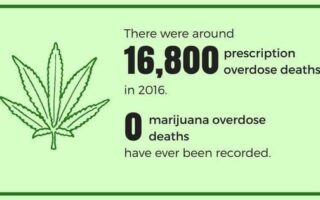Exploring the Green Frontier: Cannabis by State
As the sun rises over the diverse landscapes of the United States, a quiet revolution is underway—one that transforms the way millions think about cannabis. Once relegated to the shadows, this versatile plant has stepped into the light, sparking conversations, sparking legislation, and redefining cultural norms across state lines. From the rolling hills of California to the bustling streets of New York, each state boasts its own unique relationship with cannabis, shaped by a tapestry of history, law, and local attitudes. In this article, we embark on a journey through the ever-evolving landscape of cannabis regulation and culture—examining how differing state laws, medical regulations, and recreational policies can create a patchwork of experiences. Join us as we explore the nuances of cannabis by state, uncover the stories behind the policies, and gain insights into what the future may hold for this intriguing plant and the people who cultivate, consume, and celebrate it.
Table of Contents
- Exploring the Landscape of Cannabis Legislation Across the United States
- Navigating the Medical and Recreational Divide: State-by-State Analysis
- Cultivation Trends and Consumer Preferences in Different Regions
- Tips for Responsible Cannabis Use and Advocacy at the Local Level
- Q&A
- Wrapping Up
Exploring the Landscape of Cannabis Legislation Across the United States
The cannabis landscape in the United States is a complex mosaic of varying laws and regulations that reflect the diverse attitudes toward this plant. In some states, cannabis has been fully legalized for recreational use, while others maintain strict prohibitions, resulting in a patchwork of legality. The movement toward legalization has gained significant momentum, driven by evolving public sentiment and economic considerations. States such as California, Colorado, and Oregon have set the stage with comprehensive frameworks that not only allow recreational use but also incorporate robust medical programs, creating a model for others to follow.
However, not all regions share the same progressive vision. In contrast, states like Idaho, Kansas, and Nebraska have remained steadfast in their resistance to legal cannabis, reflecting a more conservative approach to drug policy. As legislation continues to evolve, the differences between states can be stark, creating confusion among consumers and entrepreneurs alike. To better understand these variations, consider the following table that outlines the current status of cannabis legislation across selected states:
| State | Recreational Use | Medical Use |
|---|---|---|
| California | ✅ Legal | ✅ Legal |
| New York | ✅ Legal | ✅ Legal |
| Idaho | ❌ Illegal | ❌ Illegal |
| Kansas | ❌ Illegal | ❌ Legal (limited use) |
Navigating the Medical and Recreational Divide: State-by-State Analysis
The landscape of cannabis legislation varies significantly across the United States, influenced by local politics, cultural attitudes, and economic considerations. States like California and Colorado have embraced both medical and recreational usage, offering expansive markets that foster a range of businesses, from dispensaries to cannabis-infused products. In contrast, states such as Texas and Idaho maintain strict regulations, limiting access primarily to medical users under tightly controlled conditions. Such disparities create unique environments where laws are continuously evolving, often prompting nationwide debates on cannabis’s classification and its implications on public health and criminal justice.
To illustrate these differences, here’s a brief comparison of selected states regarding their cannabis laws:
| State | Medical Use | Recreational Use |
|---|---|---|
| California | ✔️ | ✔️ |
| Texas | ✔️ | ❌ |
| New York | ✔️ | ✔️ |
| Idaho | ❌ | ❌ |
These contrasts highlight the ongoing debate surrounding cannabis legislation. As states grapple with public opinion and push for reform, the question becomes: how will the future of cannabis unfold? Stakeholders, from advocates to lawmakers, must weigh the benefits of regulation against the challenges of compliance and enforcement. Understanding the nuances of each state’s approach will be crucial for anyone looking to navigate this complex and ever-changing landscape.
Cultivation Trends and Consumer Preferences in Different Regions
As the cannabis industry evolves across various states, so do the cultivation techniques and consumer demands. In regions where the climate favors outdoor growing, such as California and Colorado, producers lean towards sustainable practices, emphasizing organic cultivation methods. Consumers in these areas show a marked preference for locally-sourced and eco-friendly products. Conversely, in states with a harsher climate like Michigan or New York, indoor hydroponic systems are gaining traction, allowing growers to maximize yield while meeting high-quality standards. The preference for indoor-grown cannabis often sways consumers in urban environments who prioritize purity and potency.
Additionally, regional consumer preferences reflect cultural influences and trends that shape market dynamics. For example, in the Pacific Northwest, there is a notable inclination towards craft products and artisanal strains, signifying a demand for unique flavors and experiences. In contrast, states in the Midwest are witnessing a surge in demand for wellness-focused cannabis, with many looking for products that offer therapeutic benefits. A comparison of these trends can be encapsulated in the following table:
| Region | Preferred Cultivation Method | Consumer Trends |
|---|---|---|
| California | Outdoor, Organic | Locally-sourced, Eco-friendly |
| Colorado | Outdoor, Sustainable | Craft products, Unique flavors |
| Michigan | Indoor, Hydroponics | Quality and Potency |
| New York | Indoor, Advanced Techniques | Wellness-focused, Therapeutic |
Tips for Responsible Cannabis Use and Advocacy at the Local Level
When engaging in cannabis use, it’s crucial to prioritize wellness and responsibility. Here are some fundamental practices to consider:
- Know Your Limits: Understand your personal tolerance levels and consume cannabis in moderation to enhance your experience without overindulgence.
- Stay Informed: Keep updated on local laws and regulations governing cannabis use to ensure compliance and encourage others to do the same.
- Praise Positive Practices: Engage with local initiatives aimed at promoting safe consumption and responsible marketing to foster a healthy cannabis culture.
Advocacy at the local level can contribute significantly to shaping policy and community perceptions. Consider the following strategies when looking to make a difference:
| Advocacy Tip | Description |
|---|---|
| Join Local Organizations | Collaborate with community groups focused on cannabis education and reform. |
| Host Educational Events | Organize workshops or panels to share knowledge about cannabis benefits and safe usage. |
| Engage with Lawmakers | Communicate with local officials to advocate for sensible cannabis policies. |
Q&A
Cannabis by State: Q&A
Q: How are cannabis laws structured across different U.S. states?
A: Cannabis laws in the U.S. are a patchwork of regulations that vary significantly from state to state. Some states have fully legalized cannabis for recreational use, while others permit it only for medicinal purposes. There are also states where cannabis remains completely illegal. Each state’s laws dictate everything from possession limits to sales taxes and licensing requirements.
Q: Which states were the pioneers in legalizing cannabis?
A: Colorado and Washington were the trailblazers, becoming the first states to legalize recreational cannabis in 2012. This landmark decision set the stage for other states to reevaluate their cannabis policies and led to a wave of legalization movements across the country.
Q: How does taxation on cannabis differ from state to state?
A: Taxation on cannabis can vary widely. Some states impose a flat sales tax on cannabis purchases, while others implement tiered tax rates based on product type or potency. For example, in California, cannabis is subject to a 15% excise tax in addition to local sales taxes, whereas in Oregon, a standard sales tax does not apply, but there is a business tax imposed on retailers.
Q: What are some common restrictions regarding cannabis usage in different states?
A: Common restrictions include limitations on where cannabis can be consumed (such as prohibiting use in public spaces) and restrictions on cultivation (like the number of plants an individual can grow). Some states require medical users to obtain a state-issued card, while others have introduced age restrictions to limit access among minors.
Q: Are there any notable differences in cannabis product availability across states?
A: Yes, the range of cannabis products can differ dramatically. Some states have thriving markets that offer a vast selection of strains, edibles, tinctures, and concentrates. Conversely, in states with stricter regulations, consumers may find a limited selection of low-THC products or primarily medicinal offerings.
Q: How do cannabis social use laws differ by state?
A: Social use laws, or the ability to consume cannabis in social settings, vary widely. A few progressive states have embraced cannabis lounges and public consumption events, while others maintain strict prohibitions against public use, treating it similarly to alcohol consumption.
Q: Can individuals legally travel with cannabis across state lines?
A: No, individuals cannot legally transport cannabis across state lines due to federal laws that classify cannabis as a Schedule I substance. Even if traveling from one legal state to another, possession during transit can lead to serious legal repercussions.
Q: What should consumers be aware of regarding cannabis quality and testing?
A: Consumers should be informed about the quality and testing of cannabis. Many states require independent testing to ensure products are free from contaminants and accurately labeled for potency. However, testing regulations differ; consumers should research the requirements in their state to ensure they are purchasing safe products.
Q: What impact has cannabis legalization had on state economies?
A: Cannabis legalization has positively impacted many state economies. States that have legalized sales report increased tax revenue, job creation, and economic growth. However, the economic benefits can be uneven, depending on how the legal market is structured and regulated.
Q: How do state cannabis laws affect criminal justice reform?
A: Cannabis legalization has sparked discussions surrounding criminal justice reform, particularly regarding the decriminalization of marijuana-related offenses. Some states have enacted policies aimed at reducing penalties for possession, expunging criminal records for previous cannabis offenses, and addressing the disproportionate impact of cannabis prohibition on marginalized communities.
Q: Where can I find more information about cannabis laws specific to my state?
A: The most reliable source of information on cannabis laws is your state’s official government website where legislative information is posted. Additionally, nonprofit organizations and advocacy groups focused on cannabis reform often provide updates and resources tailored to specific states and their unique laws.
Wrapping Up
As we conclude our exploration of cannabis regulations across the United States, it becomes clear that this vibrant plant transcends state lines, each jurisdiction molding its unique relationship with it. From the coastal shores of California to the bustling streets of New York and the midwestern farmlands of Illinois, cannabis has woven itself into the fabric of daily life, policy, and economy in ways that are both fascinating and complex.
This kaleidoscope of laws and attitudes highlights the ongoing evolution of cannabis in the American landscape. As states remain divided in their approaches and regulations, the conversation around cannabis continues to grow, adapt, and challenge pre-existing notions. Whether you’re a recreational user, a medical patient, or an interested observer, understanding these nuances is key to appreciating the broader implications of cannabis legalization.
The journey through the states reveals a dynamic tapestry of progress and tradition, innovation and caution. As we move forward, ongoing dialogue, research, and community engagement will be vital in shaping an equitable future for cannabis. The story is far from over—it’s merely a chapter in the ongoing narrative of cannabis in America, one that invites everyone to participate in the conversations that will define its next phase.
Thank you for joining us on this enlightening journey through the ever-evolving world of cannabis by state. Stay curious, stay informed, and until we meet again, may the discussions continue to flourish.


